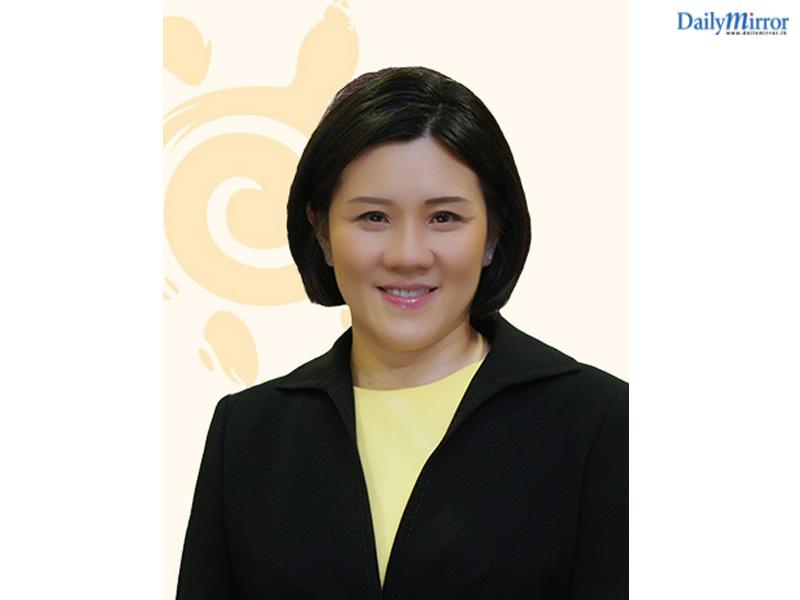Reply To:
Name - Reply Comment
 Contributed by: Dr Wong Chiung Ing
Contributed by: Dr Wong Chiung Ing
When Facing Crossroads: Shared Cancer Treatment Decisions
Cancer treatment decisions may seem black and white, but underneath the surface, medical, social and economic factors comprise just some of many individual situations that can complicate treatment decisions for patients with cancer.
For women with breast cancer, their treatment decisions can be made even more socially and emotionally difficult because of the different social perceptions and expectations of women, especially in conservative Asia.
Dr Wong Chiung Ing, who has a special interest in breast and gynecological cancers as a Senior Consultant, Medical Oncology at Parkway Cancer Centre, discusses how the diagnosis of cancer can affect women.
“I cannot generalize for all women but personally if I were to be affected by breast cancer, I would have a lot of thoughts and apprehension.
“I would be worried about the treatment that I have to undergo. I would be concerned about the side effects, and how this will affect my image, sexuality, fertility and general well-being, both physically and emotionally. I would also be thinking about how it would affect my family and loved ones, or my future.”
Why sharing is caring
Breast cancer accounts for 25% of all cancers diagnosed in the world, with higher incidence rates with age. Though mammograms are recommended yearly for women ages 40 and up to screen for breast cancer, patients who are diagnosed with breast cancer may still find themselves at crossroads when it comes to decisions for breast cancer treatment because of their individual values and priorities.
According to Dr Wong, work and family commitments are the most common non-medical decisions that can disrupt treatment for breast cancer. In addition, financial constraints can be a limiting factor for treatment as well.
In such personal circumstances, they may find it more helpful to discuss their situations with their doctor and work together to make a decision that considers both their priorities and what they find important to them.
Shared decision-making between doctors and patients is a key component of patient-centred healthcare, a new way of care that is quickly gaining traction in clinical decision-making. This shift away from paternalistic decision-making, which mainly involves the doctor’s information and recommendations, towards a shared, two-way relationship, is one that takes the patient’s values and preferences into consideration.
This two-way decision-making process is particularly important in an age where patients can access a multitude of online resources to equip themselves with information, and usually have questions before even turning up at the clinic.

When doctors take the lead
Though shared decision-making ensures that both the doctor and patient’s sides are heard, there can be difficult instances where doctors may have to step in and make the decision for the patient.
“This happens when patients are mentally challenged and unable to make their own decision,” shares Dr Wong. “Even then, I would discuss the treatment aims and options with family members before proceeding with the next step.
“I think when patients are diagnosed with cancer, they go through an emotional rollercoaster. They will first have to pluck up the courage to decide to have treatment. The next step is to go through the treatment, to endure the side effects that they may encounter during treatment. After treatment, they may face the apprehension about whether the cancer will recur, and make decisions for the future for themselves and family.”
Current breast cancer treatments include surgery, chemotherapy, targeted therapy, radiation therapy, hormonal therapy, and immunotherapy. When patients return for a second opinion on which treatment to go for, Dr Wong assures that doctors will explain and discuss the diagnosis and treatment options with the patient. “Most importantly, I would recommend the most appropriate treatment for her disease.”
In some rare cases, patients may decide to decline or discontinue treatment. In such instances, doctors may take on a larger decision-making role in helping patients navigate their concerns about their treatment. When a patient with cancer refuses treatment, as Dr Wong explains, “It is important to find out why the patient has decided to decline treatment. If we can help to address the concerns, then patients are usually persuaded.
“It is important to engage their family and loved ones so that the patient knows that she is not fighting cancer alone. Religious support, if any, are often important too.
“There are cancer support groups where patients can join to share their experiences and support one another. We have counsellors in our multidisciplinary care team whom I also refer patients to for emotional support.”
Multidisciplinary care for multifaceted circumstances
Modern breast cancer treatment is multidisciplinary and involves working with doctors from other disciplines in the management of patients, namely surgeons, pathologists, radiologists, medical oncologists, radiation oncologists and allied health professionals. Says Dr Wong, “It is crucial to involve a multidisciplinary team in the management of patients.”
How doctors determine cancer treatment usually depends on the stage of disease at presentation. “The performance status of the patient is important for treatment decisions. Doctors would need to be cautious about recommending aggressive treatment for patients who are frail, as the risks of treatment may outweigh the benefits.”
However, even with shared decisions with patients as well as a team of multidisciplinary doctors, breast cancer doctors may still encounter difficulties in the patient’s journey.
“Most cancer doctors will not have problems deciding what is the most appropriate treatment for patients,” shares Dr Wong. “The difficult part is to convey this to the patient and help them understand why the treatment is required.
“It is useful to build trust and rapport with patients and family to support them during the treatment period. Cancer treatment may come with side effects but if the patient understands that this can happen during the treatment process, and it can be managed efficiently, they may be able to accept and tolerate the treatment better.”
Staying strong, as one
Though doctors may appear as the strong, confident figure in the cancer treatment process, they are not completely sheltered from the emotional weight that comes with it. For Dr Wong, she is no exception.
“For me, I am most emotionally affected when despite our best efforts, patients succumb to cancer.
“Often, these patients would have been treated for some time, and I would have gotten to know her and family. It is especially heartbreaking when the patient is young, or has a young family. As her treating doctor, I hope that I can walk the journey with the patient.”
With emotions and relationships playing such a central role in the social aspect of a patient’s cancer treatment journey, Dr Wong believes that shared decisions extend beyond just patients and doctors.
“Personally, I would prefer shared care not only between myself and patients, but also with family and loved ones.
“I think it is important that as a patient battles cancer, they need support from all fronts. If patients know that they are well supported, it will help to make the cancer journey smoother and less distressing.”